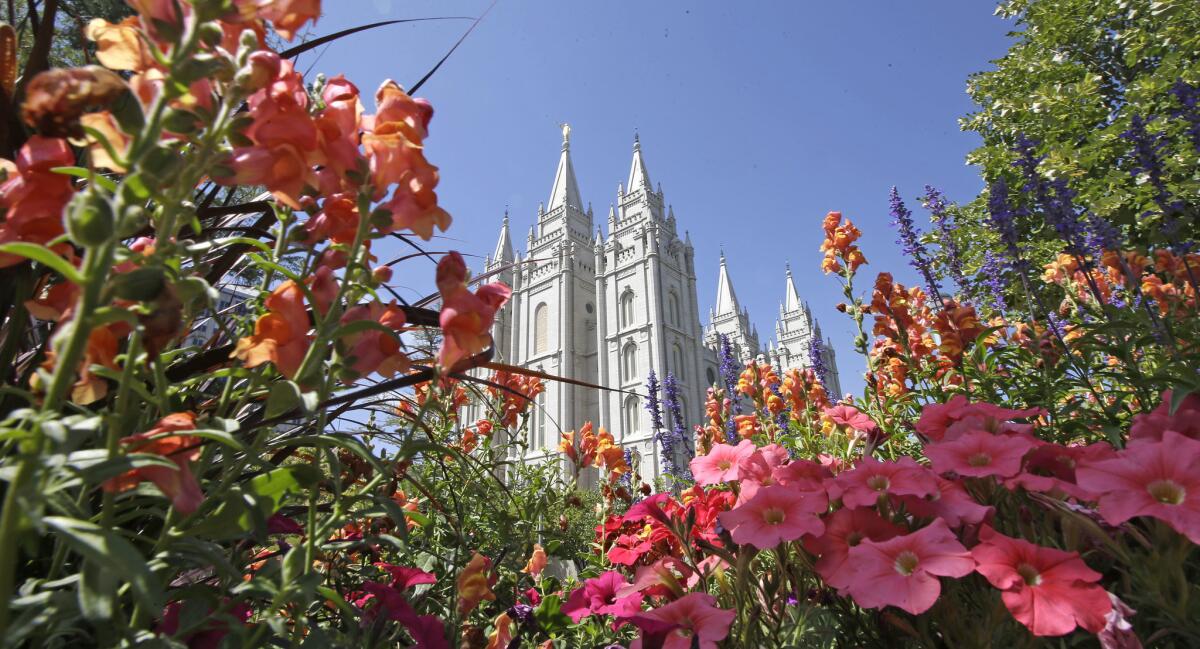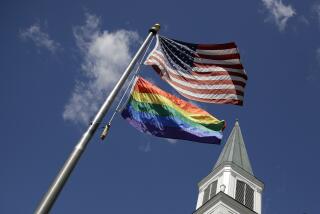Mormon Church pulls older teens out of Boy Scouts

- Share via
Stan Lockhart had seen enthusiasm for the Boy Scouts of America’s Varsity and Venturing programs diminish over the years — not just as president of the largest Scout organization in the world, but also at home as the Mormon father of a teenage boy in Provo, Utah.
His son loved Cub Scouts and enjoyed Boy Scouts, up until he was about 14. Then he changed. He wanted to do more baseball and golf, attend basketball clinics sponsored by the Utah Jazz. Scouting just wasn’t making the cut for his time. Or his attention.
Lockhart, himself an Eagle Scout, offered him a deal: Become an Eagle Scout and get a driver’s license upon turning 16.
“He worked liked mad to get it,” Lockhart said.
Lockhart said this experience was common.
The Church of Jesus Christ of Latter-day Saints saw this trend as well and announced Thursday it was extracting itself from the Boy Scouts of America’s Varsity and Venturing programs beginning in 2018. It would instead siphon teenagers into a Mormon-designed program offering a wider array of social, physical and spiritual activities.
The church will maintain its relationship with Cub Scouts and Boy Scouts between the ages of 8 and 13, but its announcement presents another challenge for an organization that has seen its membership numbers sagging for more than a decade, with 3.2 million members in 2003 compared with 2.36 million in 2015.
Some drop in membership has been attributed to the Boy Scouts’ resistance to, and then embrace of, gay youth and Scout leaders. But some boys have left Scouting simply because other interests beckon.
Lockhart heads the Utah National Parks Council, the largest Boy Scouts of America organization in the world with 90,000 members. He has seen teenagers lose interest in Scouting as they became eligible for the Varsity and Venturing Scouting programs. His son left the group after getting that driver’s license.
The decision, according to church officials, was unrelated to the Boy Scouts’ decision two years ago to allow gay and transgender people lead troops or its recent consideration of admitting girls.
“This decision is not an indictment of Boy Scouts,” church spokesman Douglas Andersen said. “There are a lot things competing for a teenager’s attention. And that means needing to be more effective in the programs we offer.”
There are approximately 185,000 Mormon boys between 14 and 18 registered with the Boy Scouts in the United States and Canada, Andersen said. He said participation in the Varsity and Venturing Scouting programs is “less — and most likely significantly less” — than that number.
The Mormon Church and the Boy Scouts have been intertwined for decades, dating back to the nonprofit organization’s beginnings about a century ago.
“Although thousands of youth and leaders who participate in Venturing crews nationwide embrace and support the program, we recognize that not all programs are a perfect fit for all partners,” read a statement by the Boy Scouts. “The BSA values our ongoing partnership with the LDS Church in Cub Scouts and Boy Scouts programming and look forward to our continued efforts to extend the benefits of Scouting to as many youth and families as possible.”
Both the church and Boy Scouts said they’re committed to each other through the Cub Scouts and a letter from the First Presidency, the church’s governing body, said those boys who want to continue on and achieve Eagle Scout status should be encouraged to accomplish that goal.
But sometimes the relationship showed signs of strain.
The Boy Scouts began in 2012 allowing openly gay members to join and in 2015 permitted gay adults to lead troops. In 2017, it began accepting members who were transgender. Prior to this, the Boy Scouts had been under a barrage of criticism for its closed policies to those groups.
The Mormon Church teaches that engaging in a homosexual relationship is in opposition to the faith’s teaching, and it had been a vocal opponent of same-sex marriage. But it got assurances from the Boy Scouts that it would not have to compromise its positions despite the new policy the group adopted.
Mormon officials and those involved with the Boy Scouts said if Thursday’s decision to end church affiliation with the Varsity and Venturing programs was related to those issues, the church could have chosen to do this sooner.
A statement on the Mormon Church’s website said the move was strictly about youth engagement, not sexual identity.
“The BSA has always allowed the church to operate its programs in ways that are consistent with our standards and beliefs, and they have been very supportive,” the statement read. “This change is to address the needs of young men ages 14 to 18. The Church is always evaluating what is best for our youth and families, and will continue to do so.”
Jim Key, a spokesman for the Los Angeles LGBT Center, said he was skeptical of the church’s assertions.
“It’s hard to believe that today’s decision is rooted in anything but homophobia, since it was just two years ago that the church announced it would reevaluate its long-term relationship with the Boy Scouts of America after the organization ended its ban on openly gay adult leaders,” Key said. “It’s very disappointing that the bigotry of church leaders will prevent older boys from the benefits of Scouting.”
The Venturing program was officially created in 1998 and focused on a variety of activities for boys older than 14. The website says teens are encouraged to try rappelling a cliff, designing a robot or kayaking. The Varsity program centers more on sports, including soccer, swimming and camping.
Michael Clara, who led Boy Scouts in his ward in Salt Lake City, said that the structure of the programs required high levels of adult involvement, and as interest diminished among teens, age groups got lumped together to do similar activities.
He said that led to disenchantment for both the teens and adults.
“A 14-year-old isn’t the same as an 18-year-old,” he said. “But we found as the participation circles got smaller, they were all being grouped together. It just didn’t work that well.”
Staff writer Hailey Branson-Potts contributed to this report.
ALSO
Here is how the Boy Scouts has evolved on social issues over the years
Boy Scouts to allow transgender children who identify as boys to enroll
UPDATES:
3:45 p.m.: This article was updated with comments from Stan Lockhart and with additional background on the Boy Scouts.
9 a.m.: This article was updated throughout with staff reporting.
This article was originally published at 7:10 a.m.
More to Read
Sign up for Essential California
The most important California stories and recommendations in your inbox every morning.
You may occasionally receive promotional content from the Los Angeles Times.











